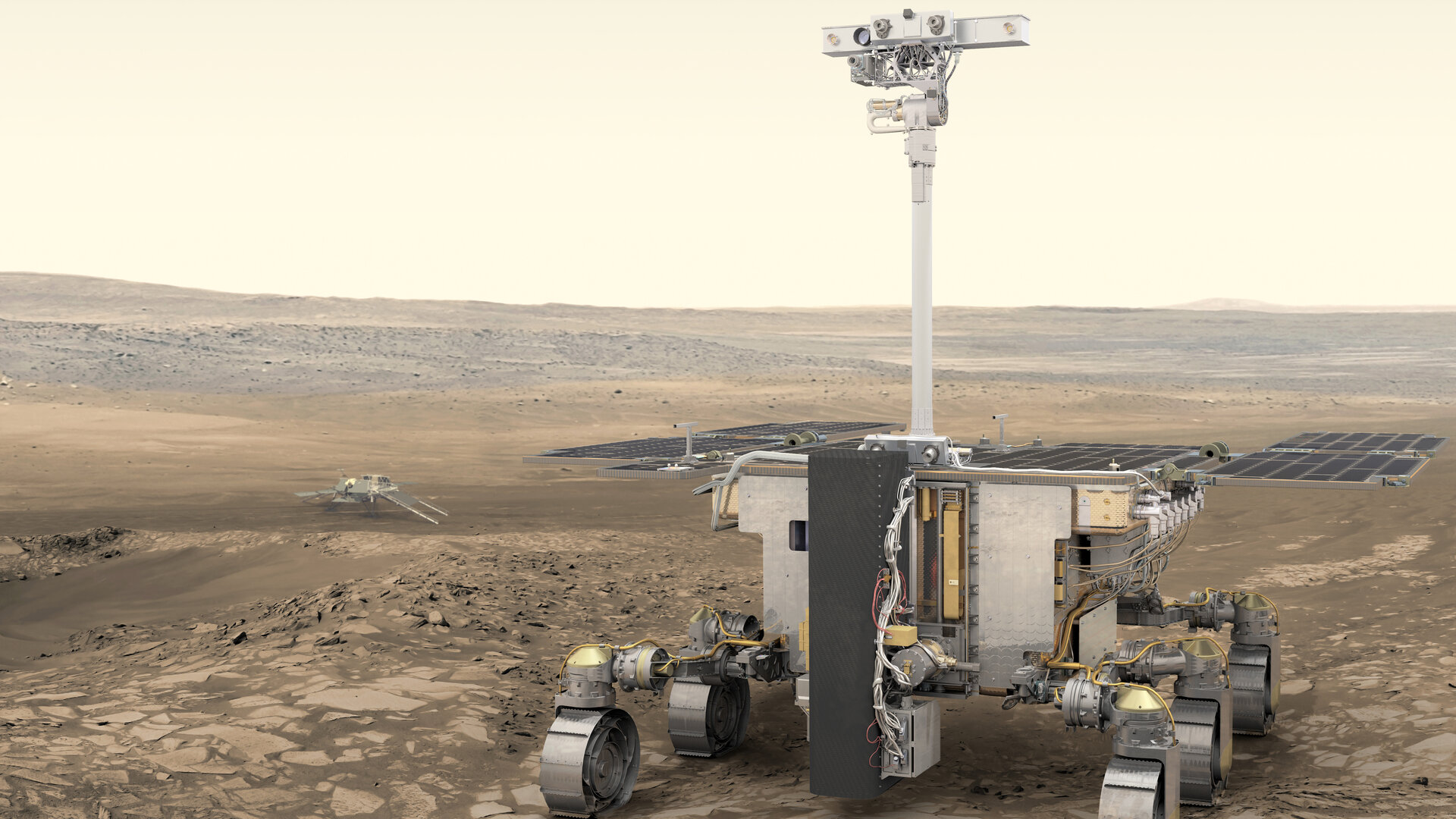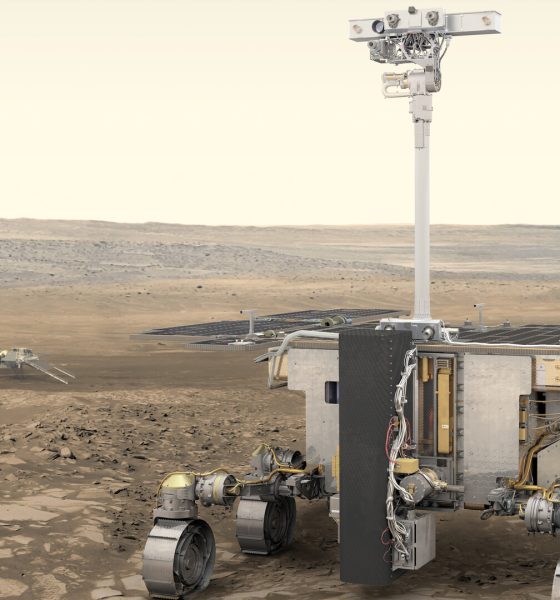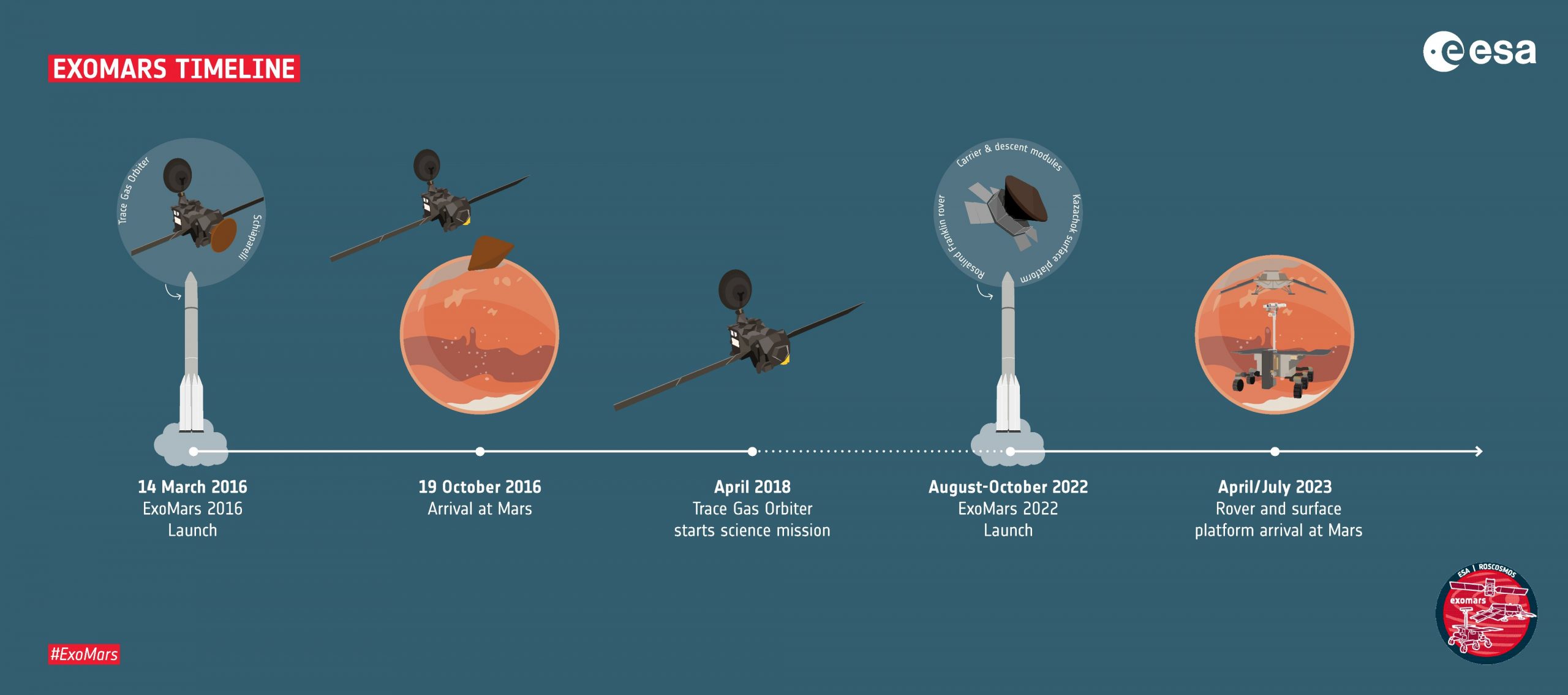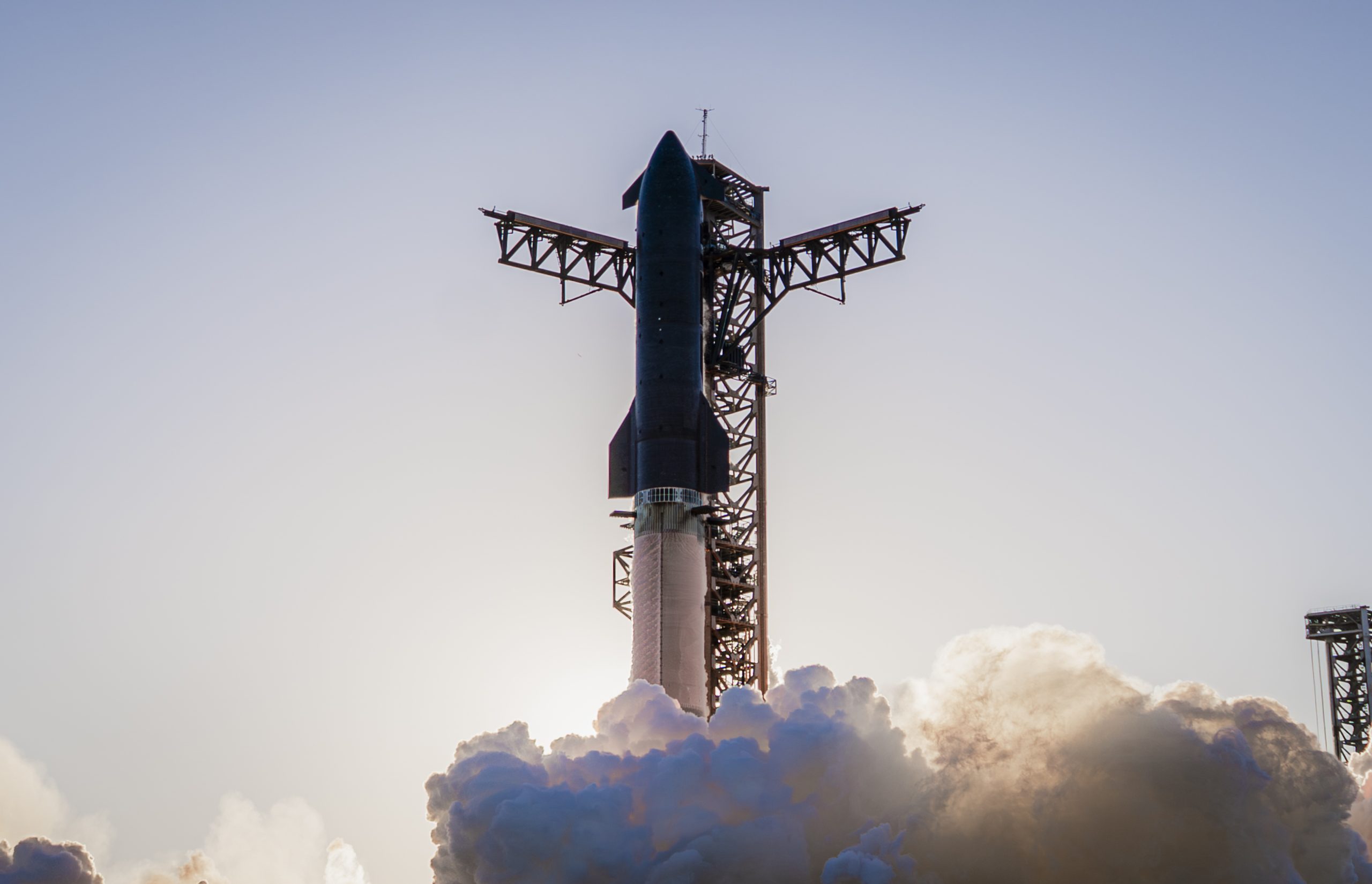

Space
Europe postpones Mars mission over ExoMars rover issue and Coronavirus
The European Space Agency (ESA) announced that its ExoMars rover would not fly this year. The mission, a collaboration with the Russian Space Agency (Roscosmos), was set to launch this summer. However, the launch has been postponed to 2022 due to technical issues and the logistical impact due to the global Conoavirus outbreak.
“This is a very tough decision, but it’s, I’m sure, the right one,” ESA Director General Jan Wörner said during a news conference at ESA’s headquarters in Paris after consulting with the head of Roscosmos, Dmitry Rogozin. “The parties had to recognise that the final phase of ExoMars activities are compromised by the general aggravation of the epidemiological situation in European countries.”
“We agreed together it’s better to go for success than just to go for launch at this time,” Wörner said. “Although we are close to launch readiness, we cannot cut corners. Launching this year would mean sacrificing remaining essential tests.”
The ExoMars rover is Europe’s first Mars rover. Named after Rosalind Franklin, a British pioneer of DNA science, the robotic explorer will search for signs of life on the red planet’s surface. Wörner said the agency needs more time to troubleshoot issues with the spacecraft’s parachute system as well as precise electronics, so the delay is necessary.
Also, the recent coronavirus outbreak that’s spreading around the globe isn’t helping. So instead of rushing, the team is taking the next two years to conduct extensive testing and make sure they get it right.

“We have made a difficult but well-weighed decision to postpone the launch to 2022,” Rogozin said in a statement. “I am confident that the steps that we and our European colleagues are taking to ensure mission success will be justified and will unquestionably bring solely positive results for the mission implementation.”
The ExoMars rover is a follow-on to ESA’s ExoMars Orbiter mission, which reached the red planet in 2016. That mission consisted of two parts: the Trace Gas Orbiter (TGO) and the Schiaparelli lander, a technology demonstrator. Unfortunately, the Schiaparelli crash-landed during its descent to the Martian surface.
Landing a spacecraft on Mars is hard. The planet’s atmosphere is thinner than what we see on Earth, and as such its takes a combination of sophisticated tools, including heat shields, retrorockets, and even giant, inflatable airbags, to safely touch down on the surface.
If anyone of those techniques fails, the spacecraft will crash, which is what happened with Schiaparelli.
Despite being around for decades, parachutes are still pretty tricky, especially using them on another planet. ESA engineers have made many adjustments to the parachute system, but keep seeing the same result: they rip as soon as they deploy. Test, after test, the chutes failed. Engineers have tried reinforcing them with Teflon to make them slide out of their bags easier, but no luck.
ESA even tried to seek advice from NASA’s Jet Propulsion Laboratory, which has built every single rover on Mars and, unfortunately needs more time to collaborate on parachute design. Because there’s only a limited window of launch opportunity, ESA officials decided to make the tough call to postpone until the next Mars window opens in 2022.
Appreciate @esa and @roscosmos for making the tough decision to postpone @ESA_ExoMars to 2022. Launching & safely landing a spacecraft on Mars are extremely demanding and require many technologies & systems to function perfectly. Your work is inspiring everyone to do hard things. https://t.co/ttPzDyQJWa
— Thomas Zurbuchen (@Dr_ThomasZ) March 12, 2020
The rover and its launcher, a Russian Proton rocket, are ready to go. The agency has more parachute tests in the works, including high-altitude drops.
Additionally, Wörner said the team discovered issues with the descent module’s electronic equipment, which are essential to the mission’s success. This piece of equipment controls functions like spacecraft power, propulsion, and even parachute control. It will take some time for the bugs to be fixed.
“Due to the troubleshooting of these anomalies at system level, the final version of the flight software has been delayed, and there is not enough time to fully test it before a 2020 launch and gain the confidence we need,” Wörner said.
You can technically launch to Mars anytime, but space agencies around the world choose specific windows that open every two years. During this time, Mars and Earth are in line, so that it takes less time and uses less fuel. In 2022, that window is open from August to October.
Once it reaches the Martian surface, the rover will study an ancient lake bed. It will scour the red planet’s surface in search of biosignatures, or signs of life.

News
SpaceX reportedly mulling IPO, eyeing largest of all time: report
“I do want to try to figure out some way for Tesla shareholders to participate in SpaceX. I’ve been giving a lot of thought to how to give people access to SpaceX stock,” Musk said.

SpaceX is reportedly mulling an initial public offering, eyeing what would be the largest valuation at the time of availability of all time, a new report from Bloomberg said on Tuesday.
It is one of many reports involving one of Elon Musk’s companies and a massive market move, as this is not the first time we have seen reports of an IPO by SpaceX. Musk himself has also dispelled other reports in the past of a similar nature, including an xAI funding round.
SpaceX and Musk have yet to comment on the report. In the past, untrue reports were promptly replied to by the CEO; this has not yet gained any response, which is a good sign in terms of credibility.
However, he said just a few days ago that stories of this nature are inaccurate:
“There has been a lot of press claiming SpaceX is raising money at $800B, which is not accurate. SpaceX has been cash flow positive for many years and does periodic stock buybacks twice a year to provide liquidity for employees and investors. Valuation increments are a function of progress with Starship and Starlink and securing global direct-to-cell spectrum that greatly increases our addressable market. And one other thing that is arguably most significant by far.”
There has been a lot of press claiming @SpaceX is raising money at $800B, which is not accurate.
SpaceX has been cash flow positive for many years and does periodic stock buybacks twice a year to provide liquidity for employees and investors.
Valuation increments are a…
— Elon Musk (@elonmusk) December 6, 2025
Musk has discussed a potential IPO for SpaceX in recent months, as the November 6 shareholder meeting, as he commented on the “downsides” of having a public company, like litigation exposure, quarterly reporting pressures, and other inconveniences.
Nevertheless, Musk has also said he wants there to be a way for Tesla shareholders to get in on the action. At the meeting in early November, he said:
“I do want to try to figure out some way for Tesla shareholders to participate in SpaceX. I’ve been giving a lot of thought to how to give people access to SpaceX stock.”
Additionally, he added:
“Maybe at some point., SpaceX should become a public company despite all the downsides of being public.”
Musk has been historically reluctant to take SpaceX public, at times stating it could become a barrier to colonizing Mars. That does not mean it will not happen.
Bloomberg’s report cites multiple unidentified sources who are familiar with the matter. They indicate to the publication that SpaceX wants to go public in mid-to-late 2026, and it wants to raise $30 billion at a valuation of around $1.5 trillion.
This is not the first time SpaceX has discussed an IPO; we reported on it nine years ago. We hope it is true, as the community has spoken for a long time about having access to SpaceX stock. Legendary investor Ron Baron is one of the lucky few to be a SpaceX investor, and said it, along with Tesla, is a “lifetime investment.”
Tesla bull Ron Baron reveals $100M SpaceX investment, sees 3-5x return on TSLA
The primary driver of SpaceX’s value is Starlink, the company’s satellite internet service. Starlink contributes 60-70 percent of SpaceX’s revenue, meaning it is the primary value engine. Launch services, like Falcon 9 contracts, and the development of Starship, also play supporting roles.
News
SpaceX reaches incredible milestone with Starlink program

SpaceX reached an incredible milestone with its Starlink program with a launch last night, as the 3,000th satellite of the year was launched into low Earth orbit.
On Monday, SpaceX also achieved its 32nd flight with a single Falcon 9 rocket from NASA’s Kennedy Space Center.
The mission was Starlink 6-92, and it utilized the Falcon 9 B1067 for the 32nd time this year, the most-used Falcon booster. The flight delivered SpaceX’s 3000th Starlink satellite of the year, a massive achievement.
There were 29 Starlink satellites launched and deployed into LEO during this particular mission:
Falcon 9 launches 29 @Starlink satellites from Florida pic.twitter.com/utKrXjHzPN
— SpaceX (@SpaceX) December 9, 2025
SpaceX has a current goal of certifying its Falcon boosters for 40 missions apiece, according to Spaceflight Now.
The flight was the 350th orbital launch from the nearby SLC-40, and the 3,000 satellites that have been successfully launched this year continue to contribute to the company’s goal of having 12,000 satellites contributing to global internet coverage.
There are over five million users of Starlink, the latest data shows.
Following the launch and stage separation, the Falcon 9 booster completed its mission with a perfect landing on the ‘Just Read the Instructions’ droneship.
The mission was the 575th overall Falcon 9 launch, highlighting SpaceX’s operational tempo, which continues to be accelerated. The company averages two missions per week, and underscores CEO Elon Musk’s vision of a multi-planetary future, where reliable connectivity is crucial for remote work, education, and emergency response.
As Starlink expands and works toward that elusive and crucial 12,000 satellite goal, missions like 6-92 pave the way for innovations in telecommunications and enable more internet access to people across the globe.
With regulatory approvals in over 100 countries and millions of current subscribers, SpaceX continues to democratize space, proving that reusability is not just feasible, but it’s also revolutionary.
Cybertruck
Tesla Cybertruck fleet takes over at SpaceX’s Starbase
Interestingly, the Cybertruck uses the same exterior, a stainless steel alloy, as SpaceX rockets. This synergy between the two companies and their very different products shows a very unified mentality between Musk companies.

Tesla Cybertrucks have taken over at SpaceX’s Starbase facility in Texas, as hundreds of the all-electric pickup trucks were spotted late last week rounding out a massive fleet of vehicles.
The Cybertruck fleet is geared toward replacing gas vehicles that are used at Starbase for everyday operations. The only surprise about this is that it was not done sooner:
Was just visiting. pic.twitter.com/5Q9wPPaeuH
— Derek Li (@derek1ee) October 31, 2025
Deliveries have been going on for a few weeks, as Cybertrucks have made their way across the state of Texas from Austin to Starbase so they could be included in SpaceX’s fleet of vehicles at the facility.
Interestingly, the Cybertruck uses the same exterior, a stainless steel alloy, as SpaceX rockets. This synergy between the two companies and their very different products shows a very unified mentality between Musk companies.
However, there are some other perspectives to consider as SpaceX is utilizing such a massive fleet of Cybertrucks. Some media outlets (unsurprisingly) are seeing this as a move of weakness by both Tesla and SpaceX, as the aerospace company is, in a sense, “bailing out” lagging sales for the all-electric pickup.
It’s no secret that Tesla has struggled with the Cybertruck this year, and deliveries have been underwhelming in the sense that the company was anticipating between 1 million and 2 million orders for the vehicle before it was widely produced.
A lot of things changed with the Cybertruck between its 2019 unveiling and 2023 initial deliveries, most notably, price.
The price of the Cybertruck swelled significantly and priced out many of those who had pre-ordered it. Some have weighed the option of whether this purchase was a way to get rid of sitting inventory.
However, it seems more logical to consider the fact that SpaceX was likely always going to transition to Teslas for its fleet, especially at Starship, at some point.
It doesn’t seem out of the question that one Musk company would utilize another Musk company’s products, especially considering the Cybertruck has been teased as the vehicle that would be present on Mars.








